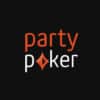When it comes to poker, bluffing is a skill that can make or break your game. One of the most effective ways to bluff is by utilizing implied odds. By understanding how implied odds work, you can strategically manipulate your opponents and increase your chances of success.
Take stealing the blinds, for example. Imagine you’re at a table with tight and weak players in the blinds. By making a well-timed bluff, you can trick them into folding, allowing you to snatch those valuable chips without even having a strong hand.
In this article, I will discuss the four best bluffing strategies using implied odds: stealing the blinds, 3-betting, 4-betting, and continuation betting. Mastering these techniques will elevate your bluffing game to new heights and give you a significant edge at the poker table.

1. Understanding Implied Odds
One key aspect of poker strategy is understanding the concept of implied odds. When playing poker, it’s crucial to consider not just the current pot odds, but also the potential future winnings that can be obtained from your opponent. Implied odds play a significant role in determining whether calling a bet with a draw is a profitable move.
Implied odds come into play when you have a drawing hand and believe that hitting your draw won’t only improve your hand but also allow you to win more money from your opponent. This is particularly important when bluffing, as understanding implied odds can help you determine the value of your bet and increase your chances of success.
By considering your opponent’s tendencies and the potential future actions they might take, you can assess the equity of your hand and determine if the potential winnings outweigh the current bet. If the implied odds are favorable, it may be worth calling the bet to see if you can hit your draw and win even more money in the long run.
Understanding implied odds allows you to make informed decisions and maximize your profits in poker. By incorporating this concept into your bluffing strategies, you can increase your chances of success and outplay your opponents.
2. Evaluating Hand Value and Betting
To evaluate hand value and make effective betting decisions, I consider the potential future earnings and the equity of my hand based on implied odds. Implied odds take into account the potential winnings from completing a draw and winning the pot, adding an extra layer of analysis to the decision-making process. By understanding the concept of implied odds, a poker player can determine if the potential future earnings outweigh the current pot odds, making a particular betting decision profitable in the long run.
To further illustrate the importance of evaluating hand value and betting, I have created a table below that showcases the different stages of a hand – the flop, turn, and river – and the corresponding considerations for evaluating hand value and making betting decisions:
| Stage | Evaluating Hand Value and Betting Considerations |
|---|---|
| Flop | Assess the strength of your hand and its potential to improve on turn and river cards. Consider the pot odds and implied odds when deciding whether to continue betting or folding. |
| Turn | Re-evaluate the strength of your hand based on the community cards and any potential draws. Consider the pot odds, implied odds, and the necessary amount of money to win on the river to break even on the turn call. Make a decision based on the expected value of the hand. |
| River | Assess the final community cards and the strength of your hand. Consider the pot odds, implied odds, and the likelihood of winning the pot. Make a betting decision that maximizes your potential earnings. |

3. Recognizing Opponent Behavior
When playing poker, it’s essential to observe and analyze the opponent’s behavior in order to make informed decisions. Recognizing opponent behavior can provide valuable insights into their hand ranges, bluffing tendencies, and decision-making process. Here are five key factors to consider when trying to recognize opponent behavior:
- Betting patterns: Pay attention to how opponents bet in different situations. Are they consistently aggressive or passive? Do they vary their bet sizing? These patterns can reveal valuable information about the strength of their hand.
- Reactions to community cards: Watch how opponents react to the community cards. Do they show excitement or disappointment? This can indicate whether they’ve improved their hand or missed their draw.
- Response to previous bets: Consider how opponents respond to your bets and the bets of others. Do they call, raise, or fold? These actions can give you clues about the strength of their hand and their willingness to bluff.
- Body language: Look for signs of weakness or uncertainty in opponents’ body language. Are they fidgeting, avoiding eye contact, or acting nervously? These behaviors can indicate that they’re bluffing or unsure about the strength of their hand.
- Level of experience and skill: Take into account the skill level and experience of your opponents. Novice players are more likely to make predictable moves, while experienced players may employ advanced bluffing strategies.
4. Refining Bluffing Techniques
To refine bluffing techniques, I assess my opponent’s behavior while considering the implications of implied odds. Bluffing is a fundamental skill in poker that involves making aggressive bets with weak hands or no hand at all, in order to deceive opponents into folding stronger hands. However, bluffing without a solid understanding of the implied odds can be risky and ineffective.
When refining my bluffing techniques, I first analyze my opponent’s behavior. This includes observing their betting patterns, their reactions to certain cards on the board, and their overall playing style. By understanding how my opponent plays and reacts in different situations, I can better gauge the likelihood of them having a strong hand or a weak hand.
Next, I consider the implications of implied odds. Implied odds refer to the potential future winnings that can be gained if a drawing hand hits its desired card. By factoring in the potential winnings from future bets, I can determine whether bluffing is a profitable strategy in a particular situation.
Refining bluffing techniques also involves understanding when to bluff and when to fold. It’s important to recognize situations where the odds of successfully bluffing are low, such as when facing a tight and experienced player who’s unlikely to fold. On the other hand, bluffing against weak-passive opponents who are more prone to folding can be a profitable strategy.
Frequently Asked Questions
What Are Good Implied Odds?
Good implied odds occur when I can win more money from my opponent after hitting a draw. Identifying profitable situations, evaluating opponent tendencies, and maximizing value with strong hands are key to achieving good implied odds.
What Percentage of Hands Should You Bluff?
In deciding what percentage of hands to bluff, various factors must be considered. These include the specific poker variation, opponent’s playing style, position, semi-bluffing techniques, balancing bluffing with value hands, utilizing blockers, reading the opponent’s hand strength, table image, and the psychological impact of bluffing.
How Do You Bluff Effectively?
Bluffing effectively involves understanding common tells, utilizing psychological aspects, adapting to different poker variations and online play, using bluffing as a defensive strategy, bluffing with small pocket pairs, targeting tight players, bluffing with a weak hand, bluffing on the river, and bluffing in tournament play.
How Do You Calculate Implied Odds Quickly?
Calculating implied odds quickly requires considering common mistakes, utilizing position, and factoring in stack sizes. Incorporating opponent tendencies helps make accurate estimates, while adjustments for different variants and recognizing unfavorable odds are essential. Balancing risk and reward is key, using pot odds as a starting point and employing advanced techniques. Table dynamics play a crucial role in accurate calculations.
Conclusion
In conclusion, mastering the art of bluffing in poker is essential for any serious player.
By understanding implied odds and incorporating the four best bluffing strategies – stealing the blinds, 3-betting, 4-betting, and continuation betting – you can greatly enhance your chances of success.
Remember to evaluate hand value, recognize opponent behavior, and refine your bluffing techniques to become a formidable force at the poker table.
With practice and strategic thinking, you can become a skilled bluffer and dominate the game.


















